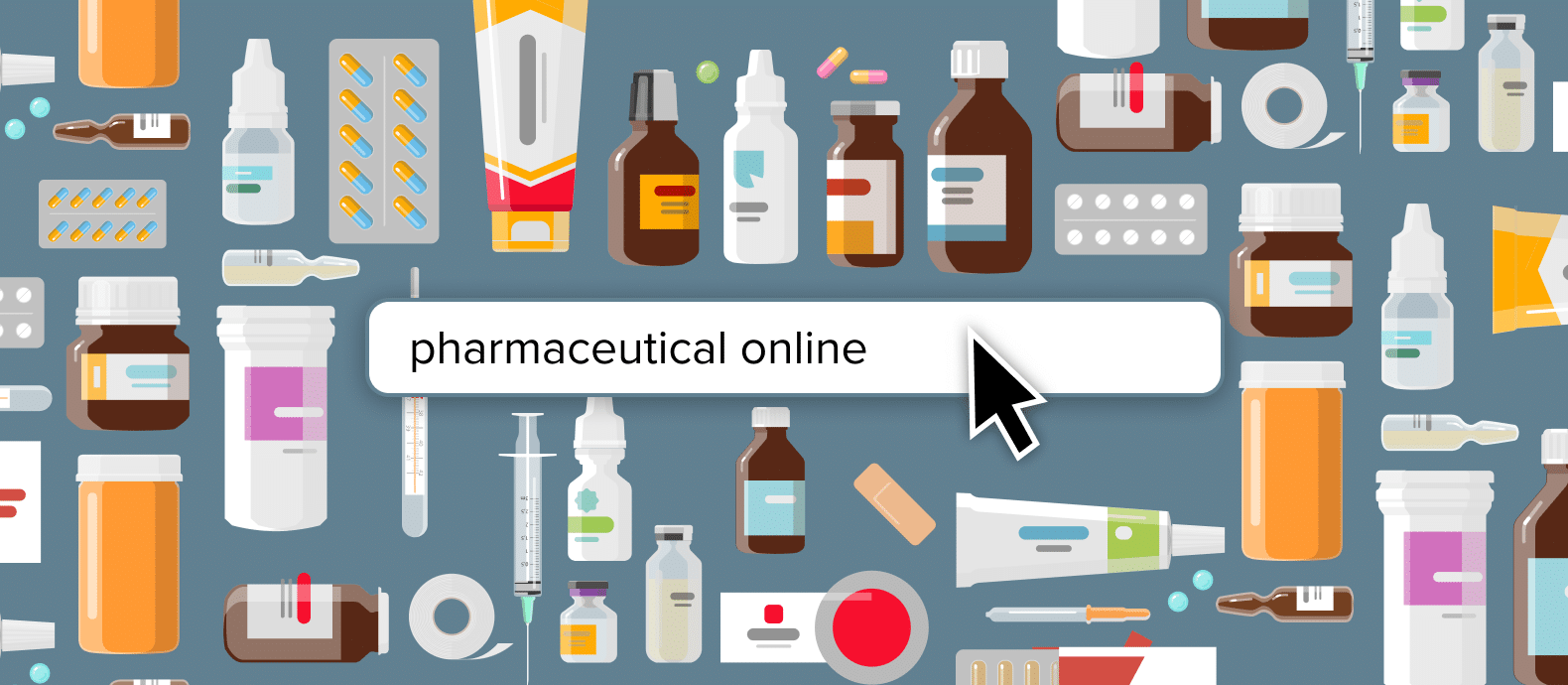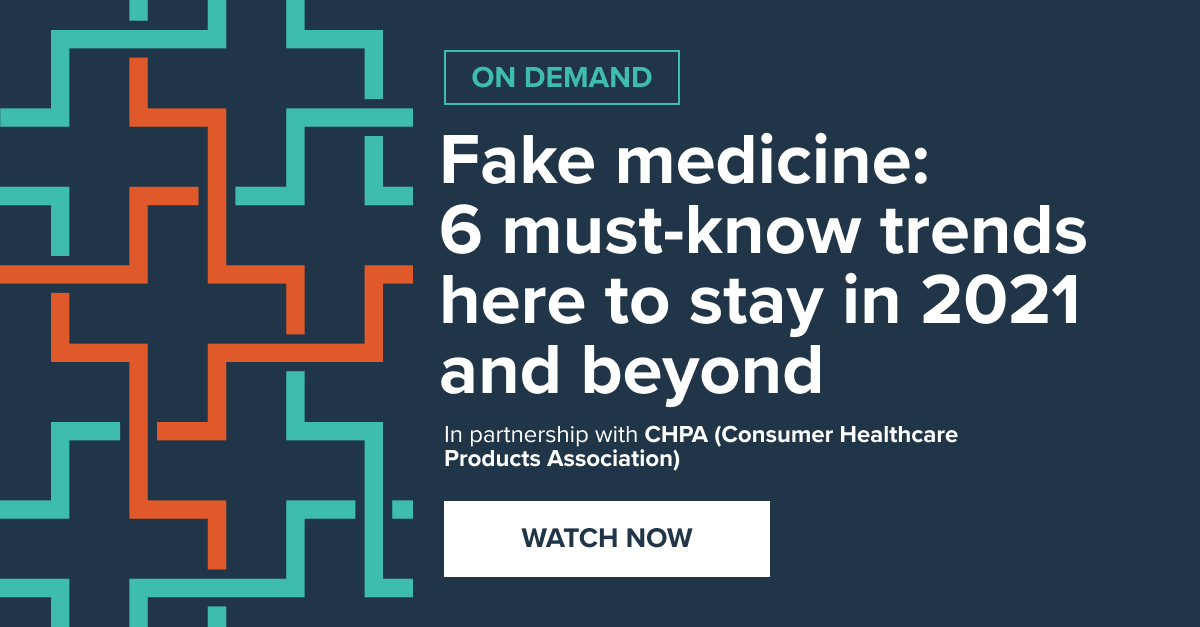
Table of Contents:
Last updated on: March 28, 2024
Fake pharmaceutical is a growing global problem. The World Health Organization (WHO) estimates that counterfeit medicines worth 73 billion euros are traded annually. The COVID-19 pandemic has taken the acceleration of online pharmaceuticals goods to the next level. According to a recent research conducted by Red Points, 60% of pharmaceutical brands have seen an increase of revenue from their online business. On the other hand, the research also shows that pharmaceutical companies have suffered an increase of 66.67% in online counterfeits as a result.
Fake pharmaceuticals are counterfeit drugs deliberately and fraudulently mislabeled with respect to identity and/or source. They are sold under a falsified brand name or generic drug labels and packaging at a fraction of the genuine drugs’ price. The composition of such fake pharmaceuticals varies from containing no or less than optimal active ingredients to containing toxic substances such as poison.
Summary
Many consumers might not pay attention to the supply chain when ordering pharmaceuticals online, that is to say, they seldom check where the sellers are located and whether they have a license. The U.S. Food and Drug Administration has run a campaign to educate consumers to get to know their online pharmacy.
However, as long as consumers are not buying from secure supply chains online, they might encounter the risk of buying fakes. A study shows that 19 million Americans purchase medication outside of the secure supply chain, mostly from the approximately 50,000 global online pharmacies.
To fake pharmaceuticals, unstandardized and rogue pharmacies are their seedbed. A comprehensive study of 11,700 online pharmacies accessible to U.S. customers found that 95% failed to fully comply with laws and industry standards to protect patients. In June 2020, the FDA has publicly warned consumers about a list of rogue online pharmacies. They informed the website operators being engaged in illegal activity in violation of the U.S. Federal Food, Drug, and Cosmetic Act.
According to the Federal Bureau of Investigation (FBI), there are more than 80,000 “portal” websites that allow customers to place orders through illegal pharmacies. They sell ad space for illegal medications and link to one of more than 1,400 “anchor” websites.
While reputed websites permit only online pharmacies accredited through Verified Internet Pharmacy Practice Sites (VIPPS) program to advertise in the U.S. Internet security experts estimate that 15 billion spam emails advertising the services of these websites are sent each day. It is likely that the majority of sites accessed through this method are illegal.
The following are the primary driving forces behind the large fake pharmaceutical industry online:
The internet has accelerated the fake pharmaceutical market due to a lack of protection of regulations in the early days. The lack of monitoring encouraged bad guys to sell counterfeit pharmaceuticals directly to consumers both nationally and internationally. It’s hard to tell the difference between authentic and counterfeit medicines, and of course consumers don’t have many ways to check their authenticity.
In 2017, WHO has reported that 1 in 10 medical products in developing countries is substandard or falsified, urging the governments to take action. “The bottom line is that this is a global problem,” says Dr Mariângela Simão, Assistant Director-General for Access to Medicines, Vaccines and Pharmaceuticals at WHO. “Countries need to assess the extent of the problem at home and cooperate regionally and globally to prevent the traffic of these products and improve detection and response.”
Online legal system is complex and overburdened, which prolongs litigation making enforcement of any legislation ineffective. While the take down of illegal online pharmacies depends on the enforcement of the legislation of each country, counterfeiters grow rapidly and can always find new ways to continue their online presence.
In 2015 National Center for Biotechnology Information(NCBI) stated in the article Regulation of Internet Pharmacies: A Continuing Challenge that ‘’Although national and international regulations and laws exist regarding online pharmacies, effective regulatory oversight and enforcement is often difficult, if not impossible, to achieve. Until an international legal framework is constructed and agreed upon, illegal pharmacies will continue to expand and inappropriately dispense medications to consumers.’’
Despite the fact that some consumers might have bought counterfeit products due to the cheap price, nobody wants to mess with their own health and wellbeing on intention.
Pharmaceutical is such a special category that each country has its own regulations. Thus, it’s often hard for consumers to acknowledge the online pharmacy policy in their country/state. The lag in general consumer awareness and lack of education about the prevalence of fake pharmaceuticals has led the consumers in buying fake drugs online unknowingly. According to a study conducted by Sanofi, with more than 20,000 people from all over the world, 97% of consumers feel that they don’t have enough information in order to not be exposed to falsified medicines.
A market with well educated consumers is obviously easier to control and regulate. Authorities around the world have already done quite some job on running public awareness campaigns. In the U.S. the FDA has launched BeSafeRx: Know Your Online Pharmacy, the European Medicines Agency has informative pages for consumers, in Australia there is a Pharmaceutical Benefits Scheme campaign. It’s critical to keep consumers informed about the latest safety regulations when buying medicines online.
In many countries the trade of online drugs is already regulated. In the U.S, the National Association of Boards of Pharmacy offers free online service to verify the regulations in each States, and the VIPPS suggests what are the rules should a standardized online pharmacy comply with. As soon as the rule is set down for every country, it will make an ease to control and monitor the online pharmaceutical market.
Many industry leaders are aware of online counterfeits, they have been taking serious measures to solve this problem by handling it internally or legally. Manually searching and reporting counterfeits is very time consuming, whilst counterfeiters are popping up online every other minute. Therefore employing an Intellectual Property software is a constructive solution that can ease the pain of losing money on online sales and receiving complaints from online providers.
One-Pager-COVID19-PharmaceuticalThe consequences of letting fake pharmaceuticals flood into ecommerce sites are not only causing pharma brands’ sales loss, damage to brand reputation, but most importantly putting consumers’ health in danger.
The more brands fight against the counterfeiters, the more they will gain back revenue from them. Thorough searching on Google, social media and top ecommerce sites for counterfeits will provide a certain level of insight into your risk, or alternatively you can choose an automated brand protection solution to monitor ecommerce sites for you. For more details on the technology of brand protection services and what are the key performance factors to look for, download our brand protection product guide.
